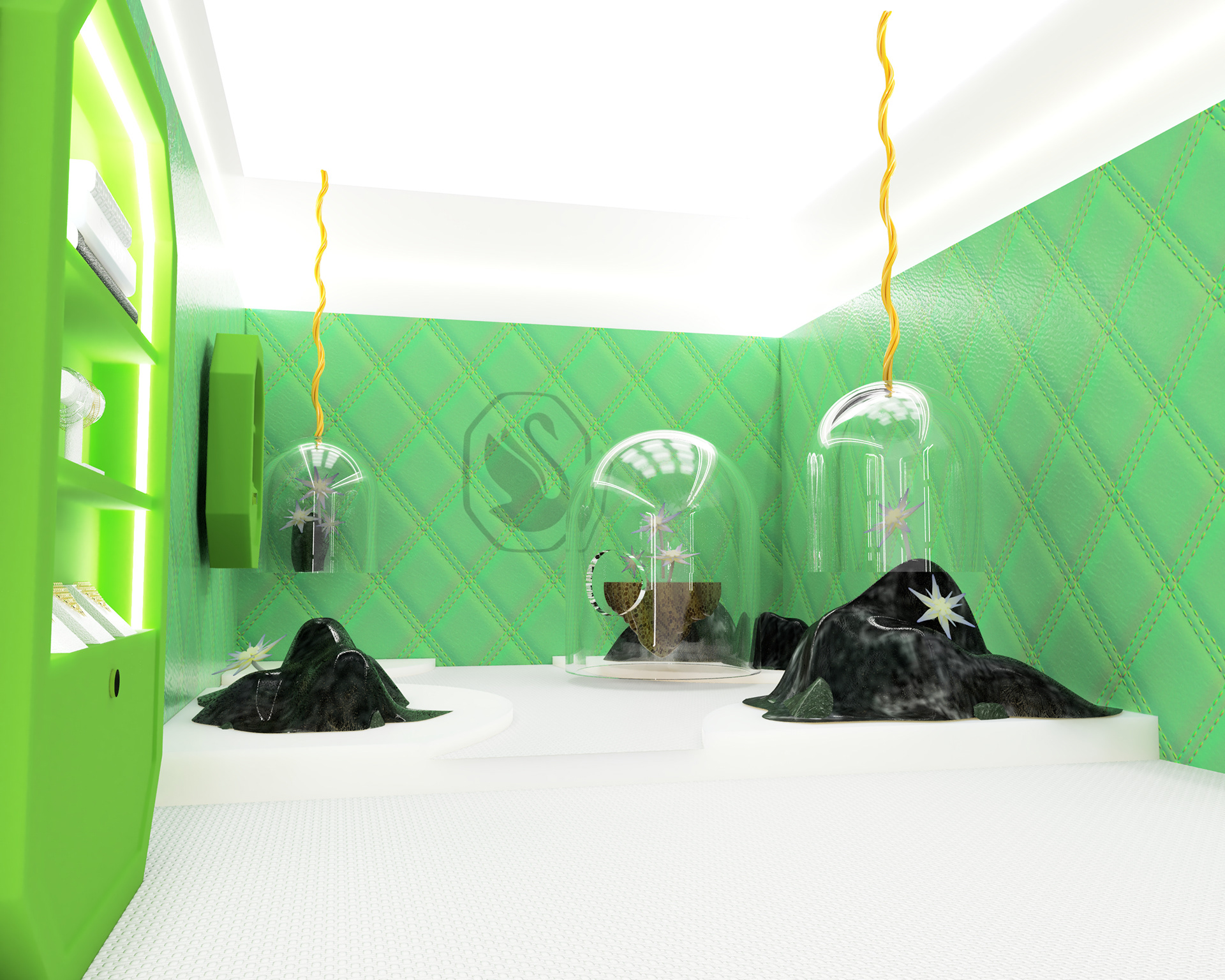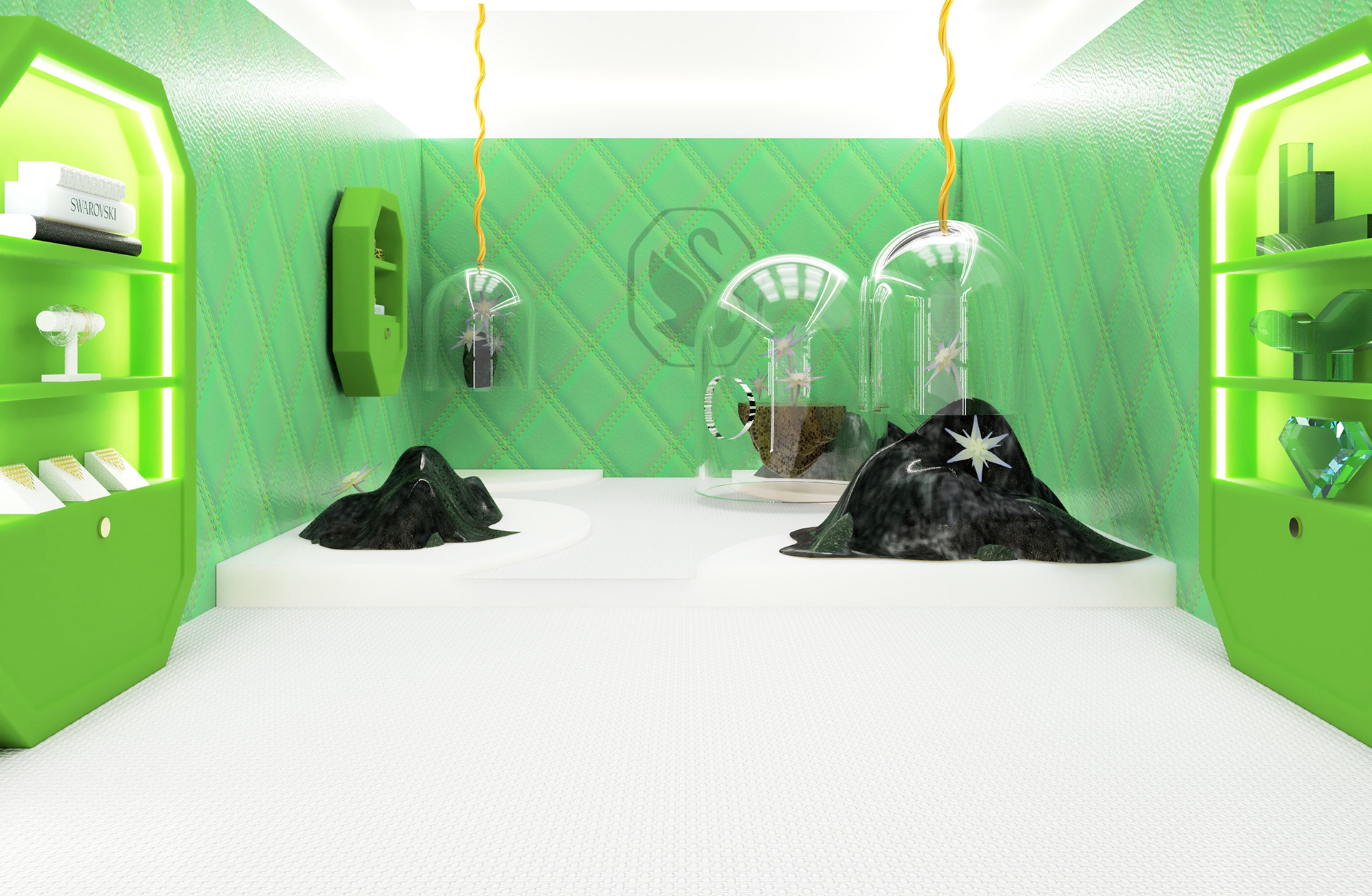

Innovative In-Store Experience for Swarovski. Climate change and human-induced habitat destruction pose significant threats to global species, resulting in a rapid decline in biodiversity. This alarming trend particularly jeopardises sensitive alpine species like the Edelweiss. Scientists project that a mere 2-degree Celsius temperature increase could force plant species to migrate to higher altitudes, a transition impossible for alpine species such as the Edelweiss. The conceptual approach is rooted in the recognition of ecosystem complexity, defining both natural and anthropocene systems. Emphasizing the multitude of possibilities and micro-systems within each, we acknowledge that every system has defined boundaries. Crossing these boundaries triggers systemic imbalances, creating an uncertain future with causality at its core. We explore the intricate relationships between actions and their consequences on the system. This conceptual framework led us to concentrate on the micro-environment of a local ecosystem in Austria, where Swarovski originated. We draw inspiration from Swarovski's commitment to the socio-cultural, economic, and environmental development of the local ecosystem. By utilising history as a guide, we aim to pave the way for a sustainable future.

